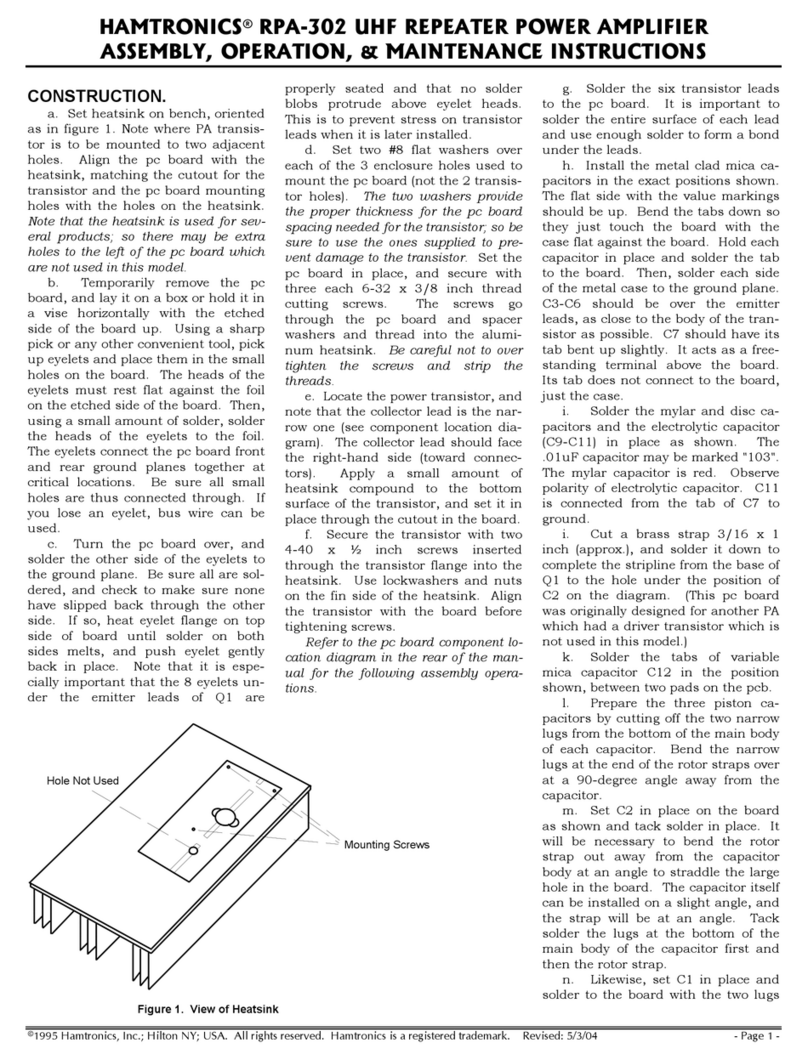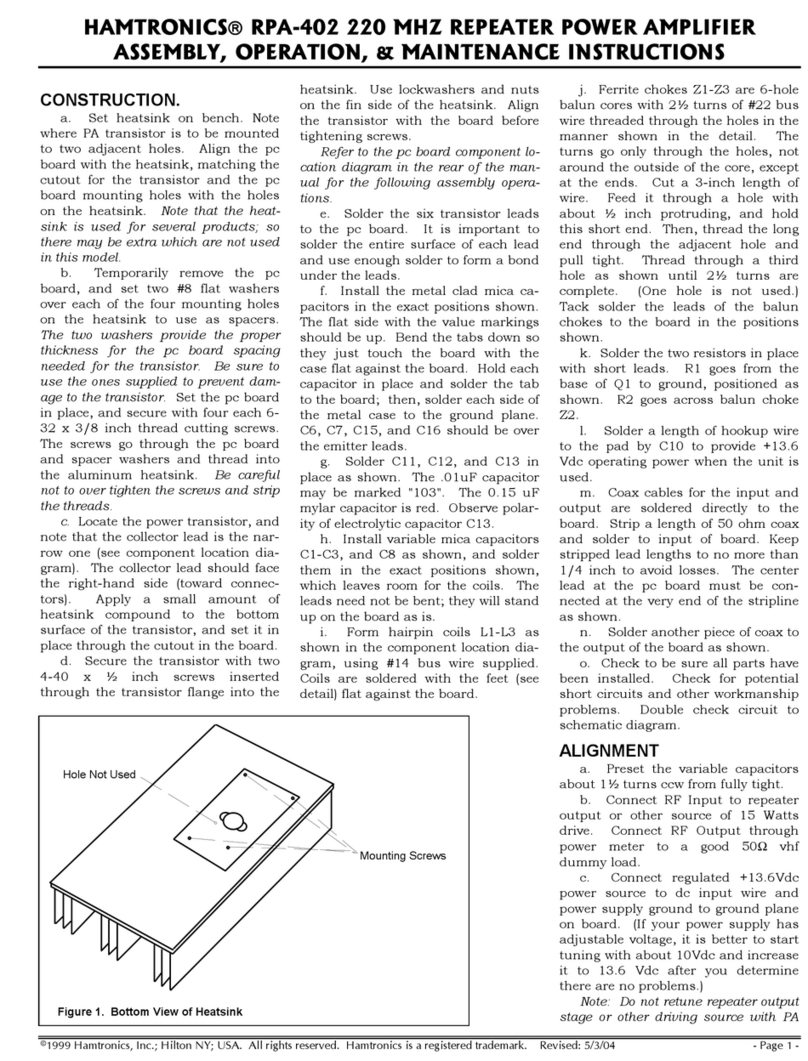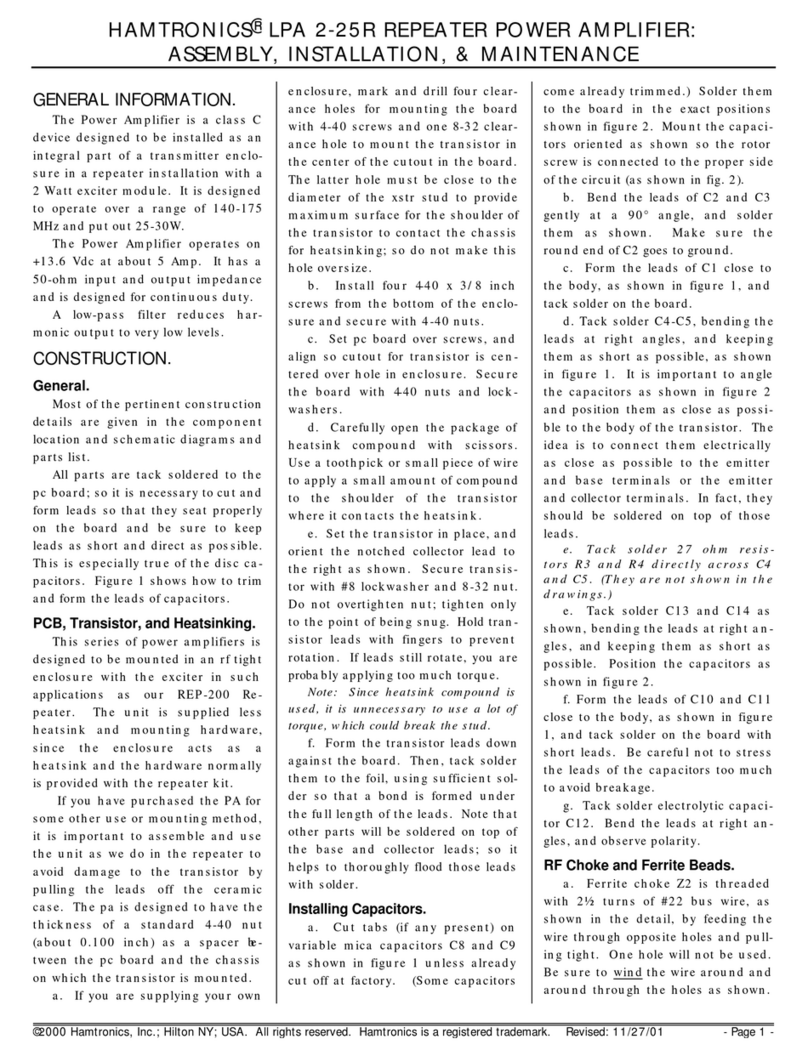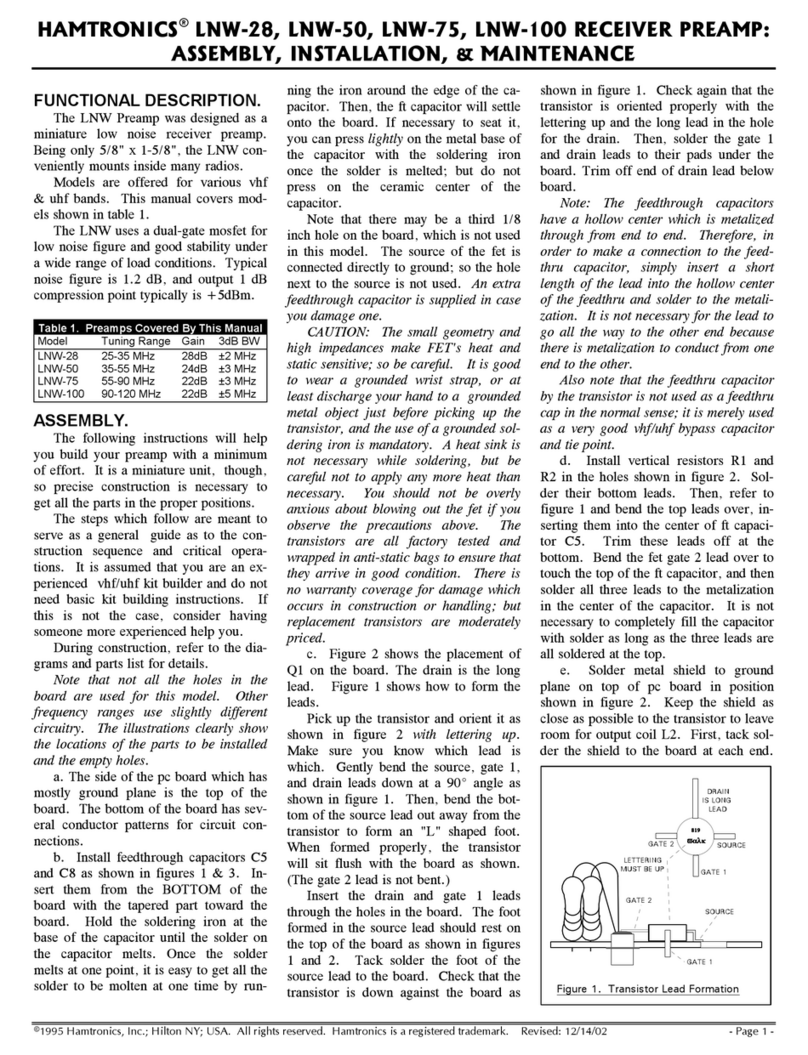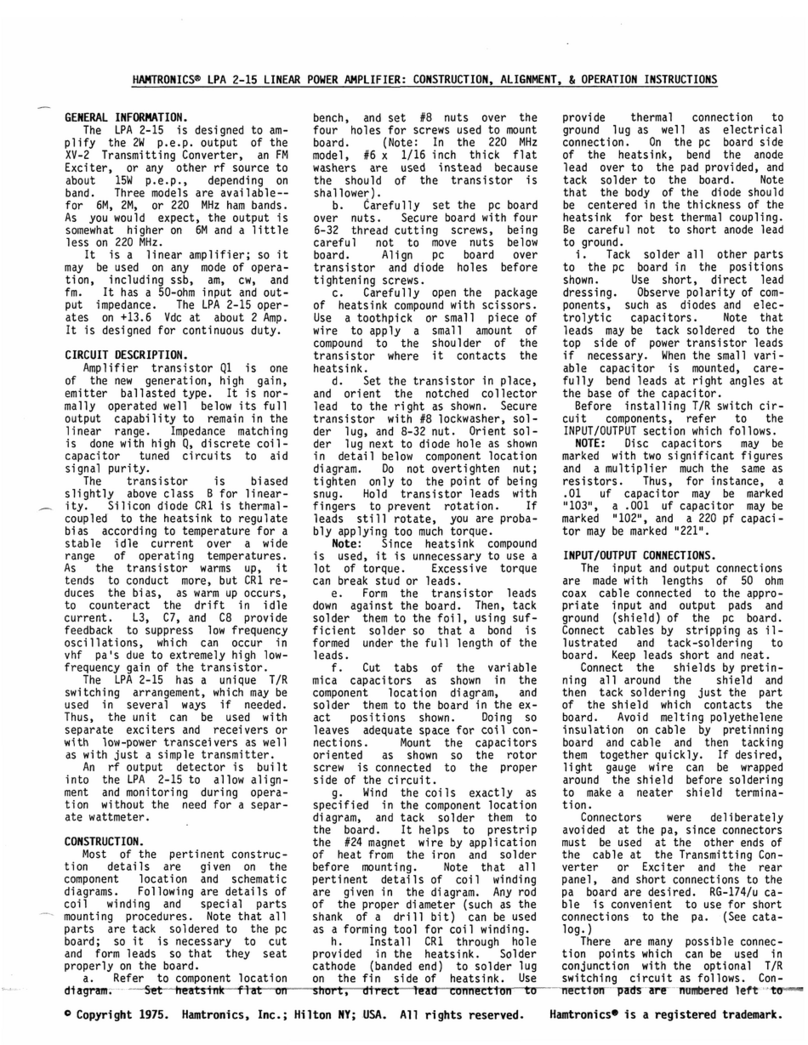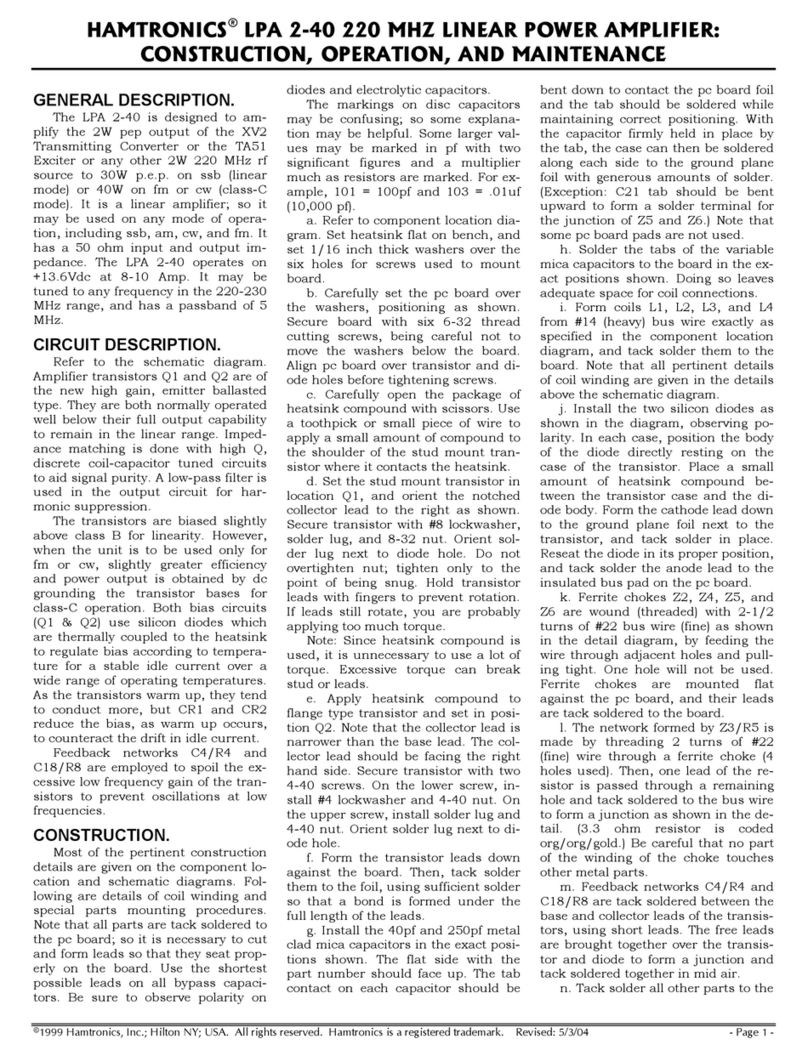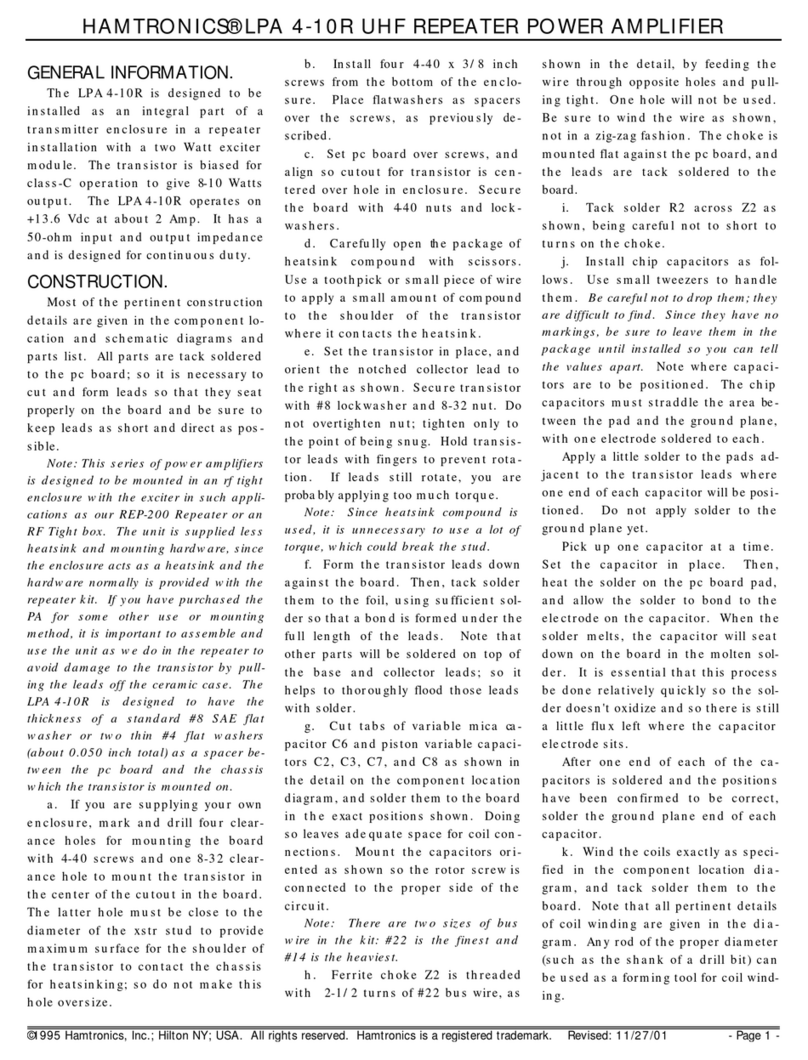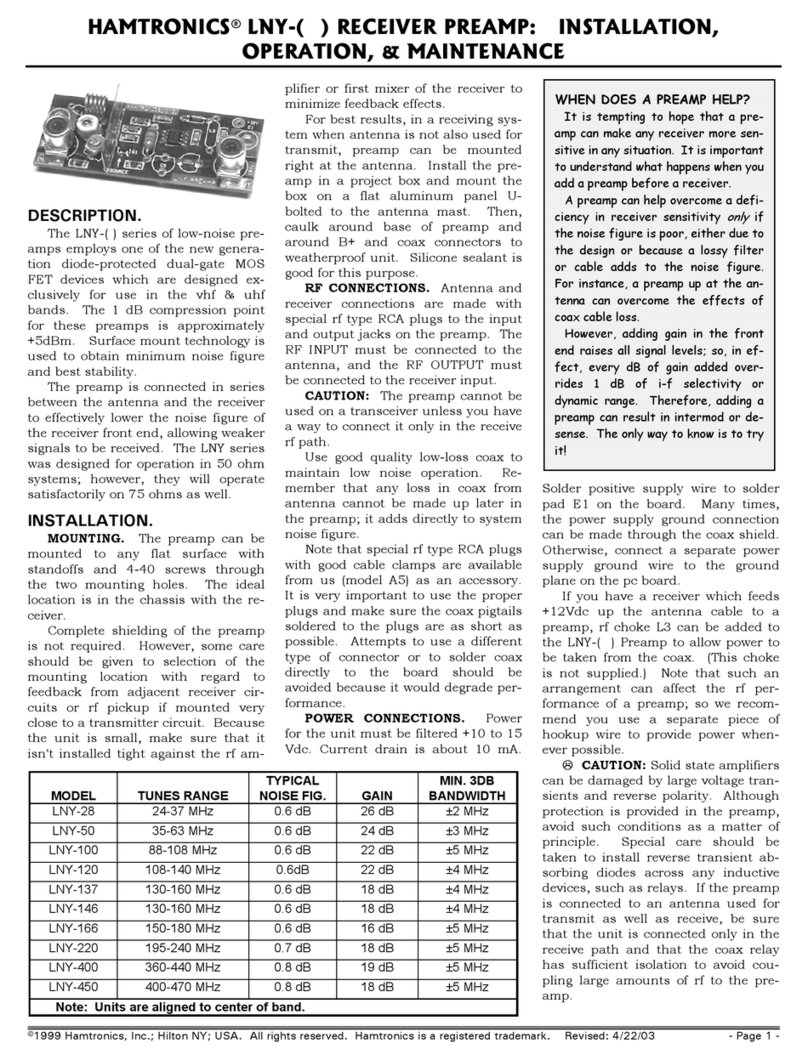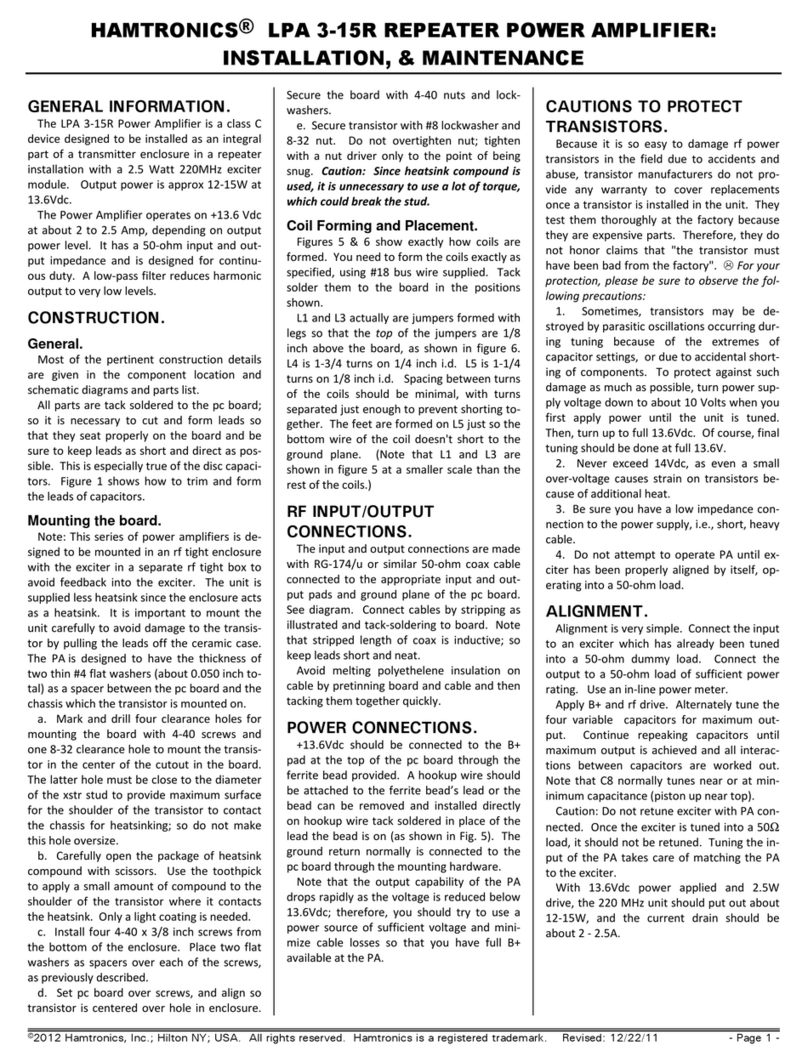
©1995 Hamtronics, Inc.; Hilton NY; USA. All rights reserved. Hamtronics is a registered t
FUNCTIONAL DESCRIPTION.
The LNW Preamp was designed as
a miniature low noise receiver pre-
amp. Being only 5/8" x 1-5/8", the
LNW conveniently mounts inside
many radios.
Models are offered for various vhf
& uhf bands. This manual covers
models shown in table 1.
The LNW uses a dual-gate mosfet
for low noise figure and good stability
under a wide range of load condi-
tions. Typical noise figure is 1.2 dB
and the output 1 dB compression
point typically is +5dBm.
Table 1. Preamps Covered By This Manual
Model Tuning Range Gain 3dB BW
LNW-144 120-150 MHz 16dB ±5 MHz
LNW-160 150-200 MHz 16dB ±10 MHz
LNW-220 200-270 MHz 16dB ±12 MHz
ASSEMBLY.
The following instructions will
help you build your preamp with a
minimum of effort. It is a miniature
unit, though, so precise construction
is necessary to get all the parts in
the proper positions.
The steps which follow are meant
to serve as a general guide as to the
construction sequence and critical
operations. It is assumed that you
are an experienced vhf/uhf kit
builder and do not need basic kit
building instructions. If this is not
the case, consider having someone
more experienced help you.
During construction, refer to the
diagrams and parts list for details.
Note that not all the holes in the board
are used for this model. Other frequency
ranges use slightly different circuitry.
The illustrations clearly show the loca-
tions of the parts to be installed and the
empty holes.
a. The side of the pc board which
has mostly ground plane is the top of
the board. The bottom of the board
has several conductor patterns for
circuit connections.
b. Install feedthrough capacitors
C5 and C8 as shown in figures 1 & 3.
Insert them from the BOTTOM of the
board with the tapered part toward
the board. Hold the soldering iron at
the base of the capacitor until the
solder on the capacitor melts. Once
the solder melts at one point, it is
easy to get all the solder to be molten
at one time by running the iron
around the edge of the capacitor.
Then, the ft capacitor will settle onto
the board. If necessary to seat it, you
can press lightly on the metal base of
the capacitor with the soldering iron
once the solder is melted; but do not
press on the ceramic center of the
capacitor.
Note that there may be a third
1/8 inch hole on the board, which is
not used in this model. The source
of the fet is connected directly to
ground; so the hole next to the
source is not used. An extra
feedthrough capacitor is supplied in case
you damage one.
CAUTION: The small geometry and
high impedances make FET's heat and
static sensitive; so be careful. It is good
to wear a grounded wrist strap, or at
least discharge your hand to a grounded
metal object just before picking up the
transistor, and the use of a grounded
soldering iron is mandatory. A heat sink
is not necessary while soldering, but be
careful not to apply any more heat than
necessary. You should not be overly
anxious about blowing out the fet if you
observe the precautions above. The
transistors are all factory tested and
wrapped in anti-static bags to ensure that
they arrive in good condition. There is
no warranty coverage for damage which
occurs in construction or handling; but
replacement transistors are moderately
priced.
c. Figure 2 shows the placement
of Q1 on the board. The drain is the
long lead. Figure 1 shows how to
form the leads.
Pick up the transistor and orient
it as shown in figure 2 with lettering
up. Make sure you know which lead
is which. Gently bend the source,
gate 1, and drain leads down at a 90°
angle as shown in figure 1. Then,
bend the bottom of the source lead
out away from the transistor to form
an "L" shaped foot. When formed
properly, the transistor will sit flush
with the board as shown. (The gate 2
lead is not bent.)
Insert the drain and gate 1 leads
through the holes in the board. The
foot formed in the source lead should
rest on the top of the board as shown
in figures 1 and 2. Tack solder the
foot of the source lead to the board.
Check that the transistor is down
against the board as shown in figure
1. Check again that the transistor is
oriented properly with the lettering
up and the long lead in the hole for
the drain. Then, solder the gate 1
and drain leads to their pads under
the board. Trim off end of drain lead
below board.
Note: The feedthrough capacitors
have a hollow center which is metalized
through from end to end. Therefore, in
order to make a connection to the
feedthru capacitor, simply insert a short
length of the lead into the hollow center
of the feedthru and solder to the metali-
zation. It is not necessary for the lead to
go all the way to the other end because
there is metalization to conduct from one
end to the other.
Also note that the feedthru capacitor
by the transistor is not used as a feed-
thru cap in the normal sense; it is merely
used as a very good vhf/uhf bypass
capacitor and tie point.
d. Install vertical resistors R1
and R2 in the holes shown in figure
2. Solder their bottom leads. Then,
refer to figure 1 and bend the top
leads over, inserting them into the
center of ft capacitor C5. Trim these
leads off at the bottom. Bend the fet
gate 2 lead over to touch the top of
the ft capacitor, and then solder all
three leads to the metalization in the
center of the capacitor. It is not nec-
essary to completely fill the capacitor
HAMTRONICS
LNW-144, LNW-160, LNW-220 RECEIVER PREAMP:
ASSEMBLY, INSTALLATION, & MAINTENANCE
GATE 1
SOURCE
GATE 2
Figure 1. Transistor Lead Formation
LETTERING
MUST BE UP
GATE 2 SOURCE
GATE 1
DRAIN
IS LONG
LEAD
ϖαλκ
819
